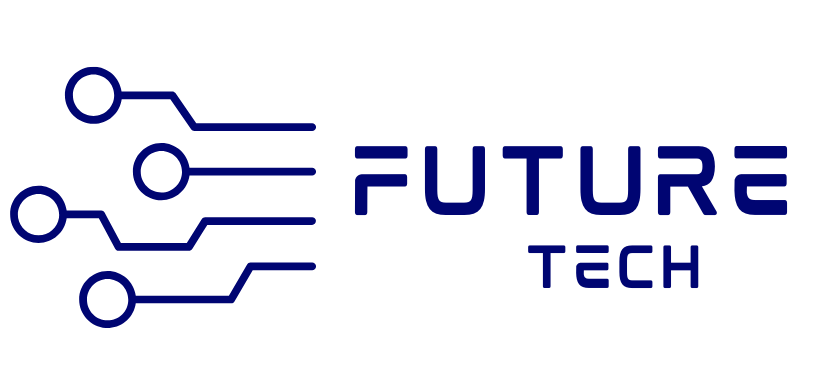The application of artificial intelligence (AI) and machine learning (ML) technologies has become more important in a variety of aspects of space exploration. These technologies have revolutionised our capacity to analyse complex data, make decisions based on accurate information, and automate jobs. The following is an example of how artificial intelligence and machine learning are use in space exploration:
When AI and machine learning come to robotic exploration. Artificial intelligence and machine learning algorithms are utilise in the process of creating, controlling, and analysing the data collected by robotic explorers such as rovers, landers, and probes. Independent navigation, the avoidance of potential dangers, and the study of scientific data are all made possible by these systems. An example of this would be the Curiosity rover, which is operate by NASA and employs artificial intelligence to analyse and prioritise the targets for its ChemCam instrument. This instrument employs a laser to vaporise objects and measure their composition.
Autonomous Satellite Operations:
Artificial intelligence and machine learning techniques are being utiliseby space organisations in order to improve the autonomy of satellites and space probes. A number of activities, including orbit determination, attitude control, and collision avoidance, are make easier by these algorithms (for example). One example is the European Space Agency’s (ESA) GAIA mission, which makes use of machine learning techniques to improve the accuracy of its predictions on the movements of asteroids and stars.

Data Analysis and Pattern Recognition:
Artificial intelligence and machine learning are utilised in order to analyse. The massive volumes of data that are gathered by space probes, satellites, and telescopes. For the purpose of helping scientists generate new discoveries and predictions, these technologies. It has the capability to recognise patterns, anomalies, and trends within the data. For example, machine learning algorithms are utilised in the process of identifying extrasolar planets. Through the examination of data obtained from the Kepler Space Telescope.
The application of AI and machine learning algorithms is employed in the process of modelling and forecasting space weather occurrences. These phenomena include solar flares, coronal mass ejections, and geomagnetic storms. These forecasts are absolutely necessary in order to protect satellites, astronauts, and spacecraft from the potentially harmful impacts of space weather.
Optimisation of Mission Planning and Resource Allocation:
Artificial intelligence and machine learning are utilise to optimise mission planning and resource allocation. This helps to ensure that space missions are able to accomplish their scientific goals within the limits of both time and money. Through the use of these algorithms, the trajectory of spacecraft may be optimise, power and communication resources can be distribute effectively, and tasks can be schedule to achieve optimal productivity.
Diagnostics and Monitoring of Spacecraft Health Artificial intelligence and machine learning algorithms. That are utilise in the process of monitoring the health of spacecraft, identifying anomalies, and diagnosing probable problems. These algorithms are able to recognise patterns in telemetry data. That point to imminent failures or malfunctions, which enables engineers to take preventative measures.
NLP stands for natural language processing. It is a set of techniques that are utilise in the communication process between ground control and astronauts or autonomous spacecraft. At the same time that these systems make it possible for astronauts to communicate with spacecraft. It receives information using natural language interfaces, they also improve efficiency and reduce the amount of manual input that is require.
Compressing and transmitting data:
Artificial intelligence and machine learning algorithms are utilise to compress and transmit data that is gather by space probes. This helps to reduce the amount of bandwidth that is require and ensures that vital data is transmitt back to Earth in an effective manner.
Using artificial intelligence and machine learning algorithms, scientists are able to uncover previously unknown occurrences, patterns, and correlations in astronomical data. This, in turn, leads to new discoveries and insights in the fields of astrophysics, cosmology, and planetary science research.
Enhanced autonomy of robotic explorers, analysis of large volumes of data, prediction of space weather, optimisation of mission planning, diagnosis of spacecraft health, and facilitation of communication between ground control and autonomous spacecraft are all examples of the significant contributions that artificial intelligence and machine learning make to the field of space exploration, respectively. These technologies make it possible for scientists and engineers to accomplish their scientific goals in a more efficient and effective manner, hence expanding the bounds of human knowledge and comprehension of the universe.
Without a doubt! The following is a list of other applications of artificial intelligence (AI) and machine learning (ML) in the field of space exploration:
Artificial intelligence and machine learning are utilise in the process of analysing astronomical data acquired from both ground-base and space-base telescopes. Some of the capabilities of these algorithms include the detection and classification of celestial objects, the identification of transitory events. Such as gamma-ray bursts or supernovae, and the search for patterns and correlations in vast datasets. For instance, the Vera C. Rubin Observatory, which was formerly known as the Large Synoptic Survey Telescope (LSST). It will utilise artificial intelligence to handle the enormous quantity of data that it gathers. This will allow astronomers to uncover previously unknown phenomena and investigate the universe at a level of depth that has never been seen before.
In order to improve the efficiency of communication between Earth and spacecraft. In deep space, artificial intelligence and machine learning algorithms are utilise. These algorithms have the ability to anticipate and adjust to changes in signal intensity. Fluctuations in atmospheric conditions, and other elements that have an impact on communication. For instance, the ESTRACK network of the European Space Agency makes use of artificial intelligence. In order to forecast and reduce the impact of air turbulence on the transmission of data from deep space missions.
By analysing the data that is gather by planetary probes and rovers, artificial intelligence and machine learning are utilise in the process of planetary exploration. This provides scientists with the ability to comprehend the geological, atmospheric, and environmental conditions of other planets and moons. Artificial intelligence is use by NASA’s Mars rovers, such as Opportunity and Perseverance, to analyse photographs and make judgements regarding where to investigate and which samples to collect.
Discovering Exoplanets:
AI and machine learning techniques are utilise to interpret data obtained from space telescopes. Like Kepler and TESS in order to identify and categorise exoplanets. It is possible for these algorithms to recognise the minute shifts in brightness or wobbles. In the location of a star that are brought about by the presence of a planet that orbits around it. For instance, in 2017, Google’s artificial intelligence-driven exoplanet discovery technology, known as AstroNet, was use to distinguish between two exoplanets.
The optimal design and performance of spacecraft can be achieve through the application of artificial intelligence and machine learning. This includes the optimisation of aerodynamic shaping, material selection, thermal management, and structural integrity. These algorithms have the ability to simulate and analyse a wide range of design possibilities in order to determine which configurations are the most effective and dependable. Artificial intelligence is utilise by NASA’s Advance Multi-Mission Operations System (AMMOS) for the purpose of designing and optimising space missions.
Artificial intelligence and machine learning algorithms:
Artificial intelligence and machine learning algorithms are utilise in the field of space traffic management. These algorithms are employe to monitor and forecast the paths of satellites and trash in Earth’s orbit. This provides space agencies with the ability to prevent collisions and ensure the safety of spacecraft and satellites. For instance, the United States Space Surveillance Network makes use of artificial intelligence to monitor and catalogue space objects, as well as to plan for future collisions.
In the field of space agriculture, artificial intelligence and machine learning algorithms are utilise to optimise. The growth of plants in space, such as those cultivate in the Veggie facility of the International Space Station (ISS). Using these algorithms, environmental factors, including light, temperature. And humidity, can be adjust to achieve the highest possible levels of plant growth and yield. For instance, the Advanced Plant Habitat (APH) programme at NASA employs artificial intelligence to regulate the conditions of the environment. And monitor the health of plants in space.
AI and machine learning are essential components in numerous aspects of space exploration. These include the analysis of astronomical data. Communication in deep space, exploration of planets, the discovery of exoplanets, the design of spacecraft. The management of space traffic, and the cultivation of space agriculture. As part of their efforts to better understand the cosmos and explore new frontiers in space. Scientists and engineers are able to make new discoveries, improve the performance of missions. And find solutions to complicated challenges thanks to the technologies that are available to them.

